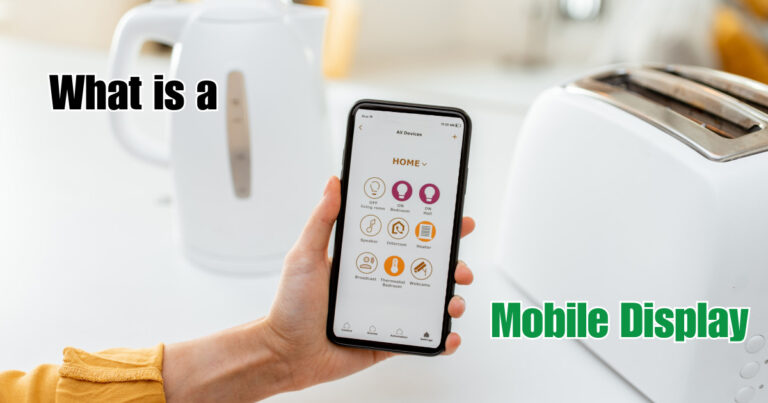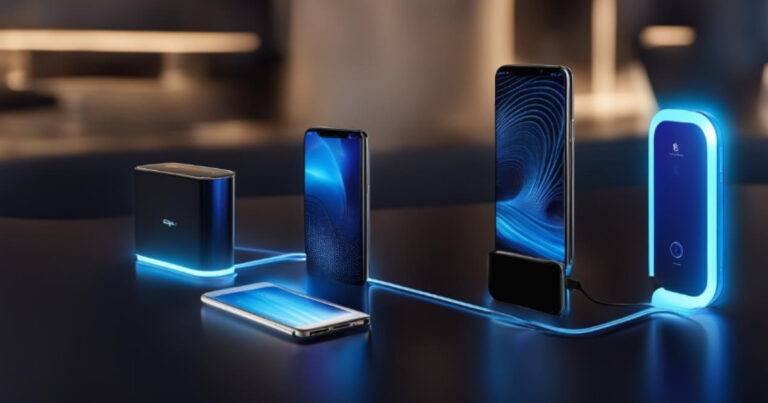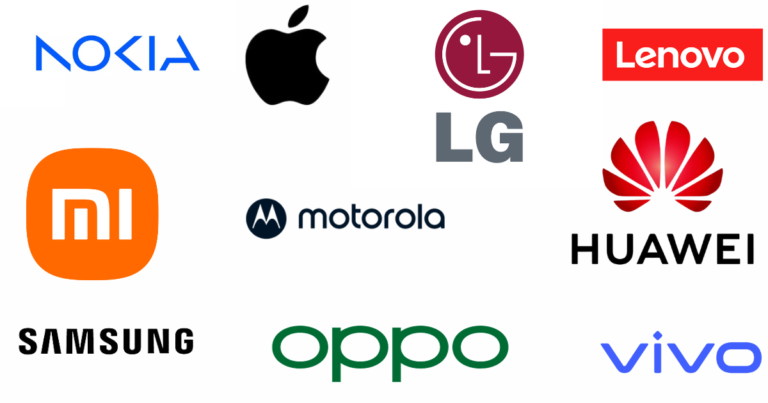What To Look For When Buying A Mobile Phone For Good Pictures?

Are you in the market for a new mobile phone that can capture stunning pictures? With the ever-increasing popularity of smartphone photography, it’s important to know what to look for when buying a mobile phone for good pictures.
In this guide, we will explore the key factors to consider, such as camera specifications, image stabilization, and low-light performance.
Whether you’re an amateur photographer or simply love capturing moments on the go, this article will help you make an informed decision and find the perfect phone to elevate your photography game.
When it comes to buying a mobile phone for good pictures, the camera specifications should be your top priority.
Look for phones with higher megapixel counts and larger sensor sizes, as these features contribute to capturing more detail and better image quality.
Consider the presence of optical image stabilization (OIS) or electronic image stabilization (EIS), as these technologies help reduce blur and shake, resulting in sharper and clearer photos.
Lastly, don’t forget to assess the low light performance of the phone’s camera, as this will determine how well it performs in challenging lighting conditions.
By paying attention to these factors, you can ensure that your new mobile phone will deliver exceptional pictures every time you click that shutter button.
What are the important factors to consider when buying a mobile phone for good pictures?
When buying a mobile phone for good pictures, there are several important factors to consider. First and foremost, you should look at the camera specifications.
Pay attention to the megapixel count, aperture size, and optical image stabilization (OIS).
Higher megapixels allow for more detail in your photos, while a wider aperture lets in more light for better low-light performance. OIS helps reduce camera shake, resulting in sharper images.
Another important factor is the image processing software. Different smartphones use different image processing algorithms, which can greatly impact the overall image quality.
Look for phones with advanced image processing capabilities, as they can significantly improve the colors, contrast, and overall sharpness of your photos.
Is a higher megapixel count always better for mobile phone cameras?
While a higher megapixel count can offer more detail in your photos, it is not the sole factor that determines image quality.
Other factors like sensor size, aperture, and image processing software also play a crucial role. In some cases, a higher megapixel count can lead to larger file sizes and slower image processing.
If the sensor size is not large enough, cramming too many megapixels onto it can result in noisy and less detailed images. Therefore, it’s important to consider the overall camera system instead of just focusing on megapixels alone.
For most users, a mobile phone camera with a resolution between 12 and 20 megapixels should be more than sufficient for capturing high-quality photos.
If you plan to print your photos in large formats or heavily crop them, a higher megapixel count may be beneficial.
How important is the aperture size in a mobile phone camera?
The aperture size of a mobile phone camera is an essential factor to consider when aiming for good pictures.
The aperture determines how much light enters the camera sensor, which directly affects the image’s exposure and low-light performance.
A wider aperture, denoted by a smaller f-number (e.g., f/1.8), allows more light to enter, resulting in better low-light performance and the ability to capture photos with a shallow depth of field.
A wider aperture can also contribute to better bokeh effects, where the background is blurred while the subject remains in focus.
This can add a professional touch to your photos, making them visually appealing. Therefore, it’s recommended to choose a mobile phone with a wider aperture, especially if you frequently capture photos in low-light conditions or enjoy creating artistic shots.
Should I prioritize optical or digital zoom when buying a mobile phone for good pictures?
When it comes to zoom capabilities on a mobile phone, optical zoom is generally considered superior to digital zoom.
Optical zoom uses the physical movement of lens elements to magnify the image, resulting in better image quality. On the other hand, digital zoom simply enlarges the pixels in the image, which often leads to a loss of detail and increased noise.
If you value zoom capabilities in a mobile phone camera, look for devices that offer optical zoom. Some smartphones have multiple lenses with different focal lengths, allowing for seamless zooming without compromising image quality.
Optical zoom is particularly useful when capturing distant subjects or when you want to get closer to the action without physically moving closer.
Are there any specific camera features or modes I should consider?
Many mobile phones come with a variety of camera features and modes that can enhance your photography experience.
Some of the features you may want to look for include:
- Portrait mode: This feature helps to create a shallow depth of field, blurring the background and keeping the subject in focus.
- Night mode: This mode improves low-light photography by capturing multiple exposures and combining them to create a well-exposed image with reduced noise.
- Pro mode: Pro mode gives you manual control over settings like ISO, shutter speed, and white balance, allowing you to fine-tune your photos according to your preferences.
- HDR (High Dynamic Range): HDR mode helps capture more details in high-contrast scenes by combining multiple exposures.
- Macro mode: This mode enables close-up photography, allowing you to capture intricate details of small subjects.
Consider your photography needs and preferences to determine which camera features and modes are important to you.
How important is the front-facing camera for selfie enthusiasts?
For selfie enthusiasts, the front-facing camera is a crucial aspect to consider when buying a mobile phone. The front camera’s resolution, aperture, and image processing capabilities all contribute to the quality of your selfies.
Look for a phone with a high-resolution front camera, preferably with a wide-angle lens to capture more people or scenery in your selfies.
A wider aperture will allow more light into the camera, resulting in better low-light selfies.
A phone with advanced image processing software can help enhance your selfies by improving skin tones, reducing blemishes, and adding various filters and effects.
How does image stabilization affect mobile phone photography?
Image stabilization is an important feature for mobile phone photography, especially when capturing photos in low-light conditions or recording videos.
There are two types of image stabilization: optical image stabilization (OIS) and electronic image stabilization (EIS).
OIS uses physical lens stabilization to compensate for camera shake, resulting in sharper images. It is particularly effective in scenarios where your hands may shake while holding the phone.
On the other hand, EIS uses software algorithms to reduce camera shake by analyzing the movement of pixels in the image. While EIS can be helpful, it may slightly reduce the image’s overall quality due to cropping and digital stabilization techniques.
If you often capture photos or videos in challenging conditions or find yourself with shaky hands, look for a mobile phone with OIS, as it can significantly improve the sharpness of your images.
How does sensor size affect mobile phone photography?
The sensor size of a mobile phone camera plays a crucial role in determining image quality, especially in low-light conditions.
Generally, larger sensors can capture more light, resulting in better image quality, reduced noise, and improved dynamic range.
When it comes to sensor size, smartphones typically have smaller sensors compared to dedicated cameras. Some smartphones feature larger sensors, often referred to as “1-inch sensors,” which can greatly enhance image quality.
While larger sensors are generally preferred, keep in mind that other factors like pixel size, image processing, and lens quality also contribute to overall image quality.
Therefore, it’s important to consider the combination of sensor size and other camera specifications when evaluating a mobile phone for good pictures.
Does the brand of the mobile phone matter for good picture quality?
The brand of the mobile phone can play a role in picture quality, but it is not the sole determining factor.
Many smartphone manufacturers, including both prominent and lesser-known brands, offer devices with excellent camera capabilities.
Instead of focusing solely on the brand, it’s more important to consider the specific camera specifications and features of the phone you are interested in.
Look for reviews, sample photos, and comparisons to gauge the camera performance of different models within your budget range.
Ultimately, the picture quality is influenced by the combination of hardware (sensor, lens, aperture) and software (image processing algorithms) used in the phone’s camera system, rather than just the brand name.
How does the operating system affect mobile phone photography?
The operating system (OS) on a mobile phone can have an impact on mobile phone photography, as it determines the camera app’s features, user interface, and overall user experience.
Both iOS and Android offer a wide range of camera apps with various features and settings. However, some users may prefer the camera app of one OS over the other.
It’s a matter of personal preference and familiarity with the interface and functionality.
Additionally, each OS may have different levels of optimization for the camera hardware and software.
It’s worth researching and comparing the camera performance of different smartphones running the same OS to ensure you choose a phone that meets your photography needs.
How does the display quality affect mobile phone photography?
The display quality of a mobile phone can indirectly affect your photography experience. A high-quality display can accurately represent the colors and details in your photos, allowing you to make better judgments about the image’s exposure, sharpness, and overall composition.
A phone with a high-resolution display and good color accuracy can provide a more immersive and accurate viewing experience.
This can be particularly useful when reviewing and editing your photos directly on the phone. Additionally, a display with good brightness and contrast can make it easier to view your photos even in bright outdoor conditions.
Consider choosing a mobile phone with a display that offers good color reproduction, high resolution, and ample brightness to enhance your photography experience.
Is it worth considering the battery life when buying a mobile phone for good pictures?
Battery life is an important consideration when buying a mobile phone, especially if you plan to use the camera extensively. Photography often requires using the screen, camera app, and other related features, which can drain the battery quickly.
Ensure that the phone you choose has a battery capacity that suits your needs. Look for phones with larger battery capacities or those known for efficient power management.
Additionally, some phones offer fast charging capabilities, allowing you to quickly recharge the battery when needed.
While it’s important to have a phone with good battery life, keep in mind that battery capacity alone doesn’t guarantee a better camera. Consider it as part of the overall package when choosing a mobile phone for good pictures.
How does the storage capacity affect mobile phone photography?
Storage capacity is an important consideration for mobile phone photography, as photos and videos can quickly accumulate and occupy a significant amount of space.
Choosing a phone with sufficient storage capacity allows you to store a large number of high-quality photos without constantly worrying about running out of space.
Some phones offer expandable storage options, allowing you to insert a microSD card to increase the available storage. This can be a cost-effective way to expand storage capacity, especially if you capture a lot of photos and videos.
Consider your photography habits and the amount of storage you need, factoring in the size of each photo and video file, to determine the appropriate storage capacity for your mobile phone.
How does the processor performance impact mobile phone photography?
The processor performance of a mobile phone can have an impact on mobile phone photography, particularly in terms of speed and responsiveness.
A powerful processor ensures that the camera app launches quickly, processes images swiftly, and allows for smooth multitasking.
When capturing photos, the processor plays a role in tasks like autofocus, image stabilization, and image processing.
A more powerful processor can handle these tasks more efficiently, resulting in faster and more accurate autofocus, smoother image stabilization, and quicker image processing.
If you’re someone who frequently captures photos in fast-paced situations or prefers shooting in burst mode, a phone with a powerful processor will likely provide a better photography experience.
What role does RAM play in mobile phone photography?
RAM (Random Access Memory) is an important aspect to consider when buying a mobile phone for photography, as it affects the phone’s multitasking capabilities and overall performance.
Having sufficient RAM allows you to switch between apps quickly, process images faster, and handle large photo files without experiencing lag or slowdowns.
When it comes to mobile phone photography, having ample RAM can enhance your experience by allowing you to swiftly review and edit photos, apply filters and effects, and use photo editing apps without encountering performance issues.
It also contributes to smoother operation of the camera app, resulting in better responsiveness and reduced shutter lag.
Consider choosing a mobile phone with a sufficient amount of RAM to ensure a smooth and enjoyable photography experience.
Should I consider the availability of accessories when buying a mobile phone for good pictures?
The availability of accessories can be a factor to consider when buying a mobile phone for good pictures, as they can enhance your photography capabilities and overall experience.
Some accessories you may want to consider include:
- External lenses: These attachable lenses can expand the camera’s capabilities, allowing you to capture wide-angle shots, macro photos, or telephoto zoom.
- Tripod or stabilizer: These accessories help stabilize your phone for long exposure shots, low-light photography, or capturing steady videos.
- Remote shutter: A remote shutter allows you to trigger the camera without touching the phone, reducing the risk of camera shake.
- Protective case: A protective case not only safeguards your phone but can also provide a better grip and stability when taking photos.
Consider the availability and compatibility of accessories for the phone you are interested in, as they can expand your photography options and creativity.
How does the price range impact the quality of mobile phone photography?
The price range of a mobile phone can impact the quality of its photography capabilities to some extent. Higher-priced phones often come with more advanced camera systems, better image processing algorithms, and additional features that can enhance your photography experience.
However, it’s important to note that price alone does not guarantee superior picture quality.
Many mid-range and even budget-friendly smartphones offer excellent camera performance, thanks to advancements in technology and competition among manufacturers.
Consider your budget and prioritize the specific camera features and capabilities you value most when selecting a mobile phone. Don’t solely rely on the price tag as an indicator of the camera’s quality.
Should I consider reviews and sample photos before buying a mobile phone for good pictures?
Before buying a mobile phone for good pictures, it’s highly recommended to read reviews and look for sample photos taken with the phone you are interested in.
Reviews provide insights into the camera’s performance, image quality, and overall user experience.
Sample photos allow you to assess the camera’s capabilities in real-world scenarios and different lighting conditions.
Look for sample photos taken in situations similar to what you typically shoot, such as low-light environments, outdoor landscapes, or portraits.
By considering both reviews and sample photos, you can make a more informed decision and have a better understanding of the camera’s strengths and limitations.
How does the warranty and customer support affect buying a mobile phone for good pictures?
The warranty and customer support offered by the manufacturer or seller can be important factors to consider when buying a mobile phone for good pictures.
A reliable warranty provides peace of mind, knowing that you are protected against defects or malfunctions that may affect the camera’s performance.
Good customer support can be beneficial if you encounter any issues with the phone’s camera or software.
Responsive and helpful support can assist you in resolving any technical problems, providing software updates, or offering guidance on maximizing the camera’s capabilities.
Read reviews and check the warranty terms and customer support reputation of the brand or seller before making a purchase decision.
Can I rely solely on a mobile phone for professional-level photography?
While mobile phone cameras have improved significantly over the years, relying solely on a mobile phone for professional-level photography may have limitations.
Dedicated cameras, such as DSLRs or mirrorless cameras, offer larger sensors, interchangeable lenses, and advanced manual controls that can provide greater versatility and image quality.
However, mobile phone cameras have become increasingly capable and can produce stunning results in the hands of skilled photographers.
They are particularly convenient for everyday photography, travel photography, and social media sharing.
If you prioritize convenience, portability, and the ability to instantly share your photos, a high-quality mobile phone camera may be sufficient for your needs.
For professional-level photography, consider a dedicated camera system that offers greater control and flexibility.
When choosing a mobile phone for taking good pictures, prioritize camera specifications like megapixel count, stabilization, and aperture, along with advanced image processing capabilities and a user-friendly camera app.
These factors collectively contribute to superior photo quality, ensuring you capture your moments beautifully and effortlessly.






